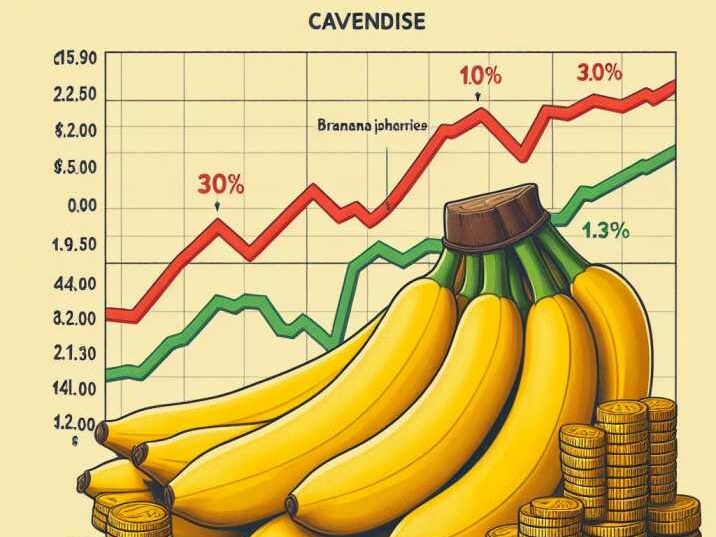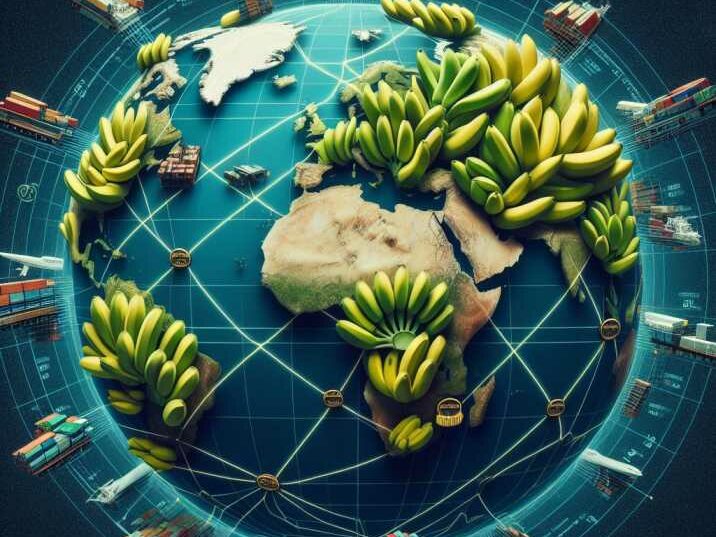Introduction
Table of Contents
In the bustling world of international trade, the fate of beloved fruits like the Cavendish banana is often shaped by complex policies and agreements between nations. From tariffs to quotas, trade policies have a profound impact on the production, distribution, and prices of bananas worldwide. In this article, we’ll delve into how trade policies and agreements influence the Cavendish banana market, exploring key factors such as supply chains, market competition, and consumer prices.

Understanding Trade Policies and Agreements
Trade policies are a set of regulations and agreements established by governments to manage the flow of goods and services across borders. These policies encompass a wide range of measures, including tariffs, quotas, subsidies, and trade agreements. When it comes to bananas, trade policies play a crucial role in determining market dynamics, affecting everything from production to consumption.
The Role of Trade Agreements
Trade agreements, such as the World Trade Organization (WTO) agreements and regional trade pacts like the European Union (EU), significantly impact Cavendish banana markets. These agreements often aim to reduce trade barriers and promote fair competition among participating countries. For example, the EU’s Common Agricultural Policy (CAP) has historically influenced banana imports through its tariff-rate quota system, which allocates a specific volume of bananas from certain countries at preferential tariff rates.
Tariffs and Quotas
Tariffs, or taxes on imported goods, can either protect domestic producers or generate revenue for the government. In the context of Cavendish bananas, tariffs can affect the competitiveness of imported bananas compared to domestically grown varieties. Additionally, quotas, which limit the quantity of imports allowed into a country, can directly impact the supply and prices of Cavendish bananas in the market.
Impact on Cavendish Banana Markets
Supply Chain Disruptions
Trade policies and agreements can disrupt Cavendish banana supply chains by imposing barriers to trade, such as tariffs or import restrictions. These disruptions can lead to fluctuations in supply and prices, affecting both producers and consumers. For instance, if a major banana-producing country faces increased tariffs on exports, it may seek alternative markets or adjust prices to remain competitive.
Market Competition
Trade policies also influence market competition within the Cavendish banana industry. Tariffs and quotas can give certain producers a competitive advantage, while disadvantaging others. Moreover, trade agreements may dictate quality standards and phytosanitary regulations, affecting the ability of producers to access lucrative markets.
Consumer Prices
Perhaps most importantly for consumers, trade policies directly impact banana prices at the retail level. Changes in tariffs or quotas can lead to price fluctuations, affecting the affordability of Cavendish bananas for households around the world. Moreover, trade agreements may influence the availability of different banana varieties, affecting consumer choices and preferences.
Current Trends and Future Outlook
In recent years, the Cavendish banana market has witnessed significant shifts due to evolving trade policies and agreements. For example, the expiration of certain preferential trade agreements has led to increased competition among banana-exporting countries. Additionally, growing concerns about sustainability and fair trade practices have prompted discussions about incorporating environmental and social criteria into trade agreements.
Looking ahead, the future of Cavendish banana markets will likely be shaped by ongoing trade negotiations, geopolitical developments, and changing consumer preferences. As global trade continues to evolve, stakeholders in the banana industry must adapt to navigate the complex landscape of trade policies and agreements.

Conclusion
In conclusion, trade policies and agreements exert a profound influence on the Cavendish banana market, shaping supply chains, market competition, and consumer prices. From tariffs to trade agreements, these policies dictate the rules of engagement for banana-producing countries and impact stakeholders across the supply chain. As the global economy continues to evolve, understanding the intricate relationship between trade policies and Cavendish banana markets is essential for navigating the complexities of international trade.
FAQs (Frequently Asked Questions)
- How do trade policies affect Cavendish banana prices? Trade policies, such as tariffs and quotas, can directly impact Cavendish banana prices by influencing supply and demand dynamics in the market. Higher tariffs or import restrictions may lead to increased prices for imported bananas, while lower tariffs can result in more competitive pricing.
- Why are trade agreements important for the Cavendish banana industry? Trade agreements facilitate smoother trade relations between countries, reducing barriers such as tariffs and quotas. For the Cavendish banana industry, favorable trade agreements can enhance market access and competitiveness, benefiting both producers and consumers.
- How do trade policies impact small-scale banana farmers? Small-scale banana farmers are particularly vulnerable to changes in trade policies, as they may lack the resources to navigate complex regulations or compete with larger producers. Trade agreements that prioritize fair trade practices and support sustainable agriculture can help mitigate these challenges.
- What role do consumer preferences play in shaping trade policies for Cavendish bananas? Consumer preferences, such as demand for organic or fair trade bananas, can influence trade policies by driving market trends and shaping industry standards. Governments and trade negotiators may consider consumer preferences when formulating trade agreements and regulations.
- How can consumers advocate for fair trade practices in the Cavendish banana industry? Consumers can support fair trade practices in the Cavendish banana industry by choosing products certified by reputable fair trade organizations, advocating for transparency in supply chains, and engaging with policymakers to promote sustainable trade policies.
